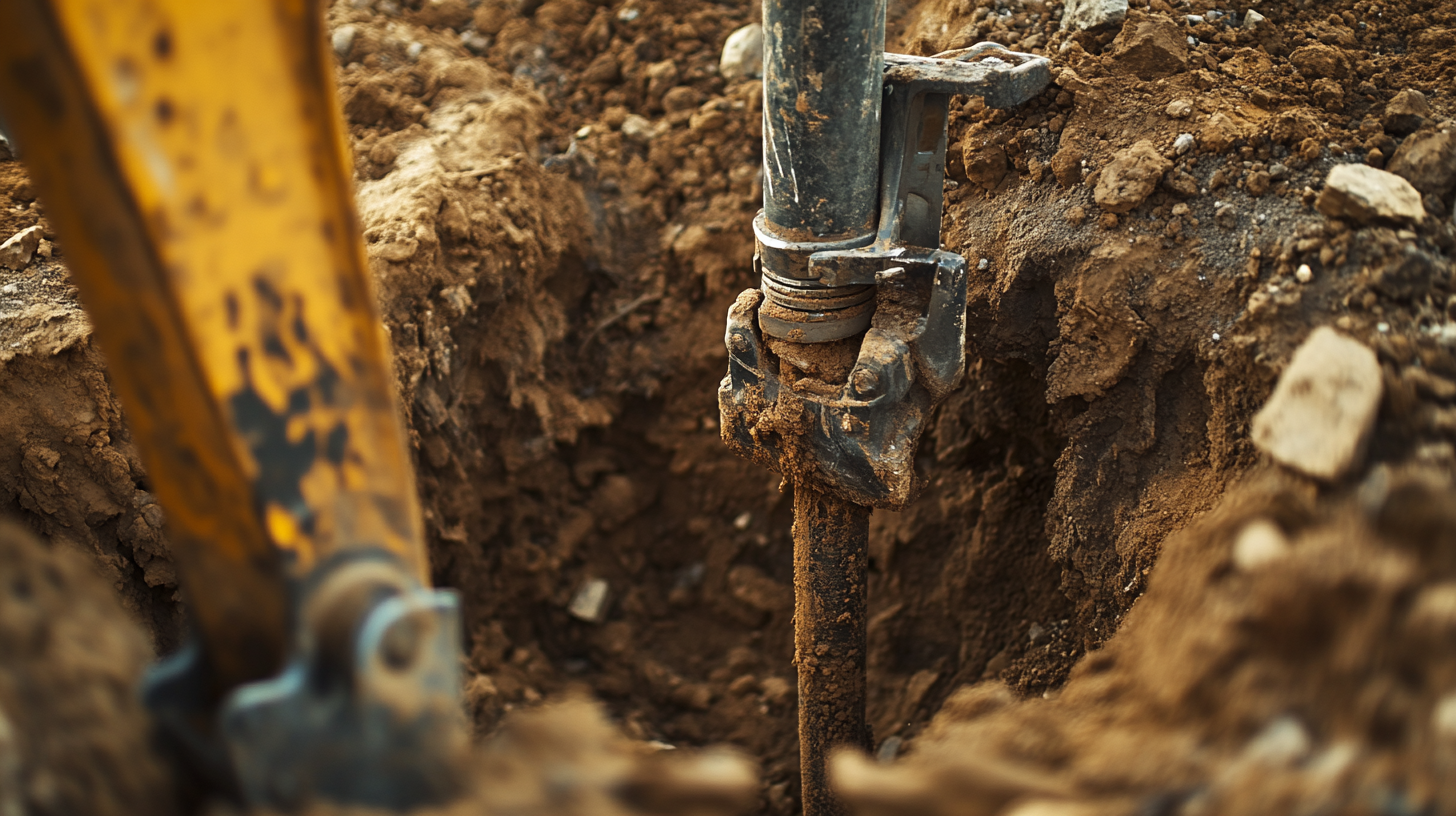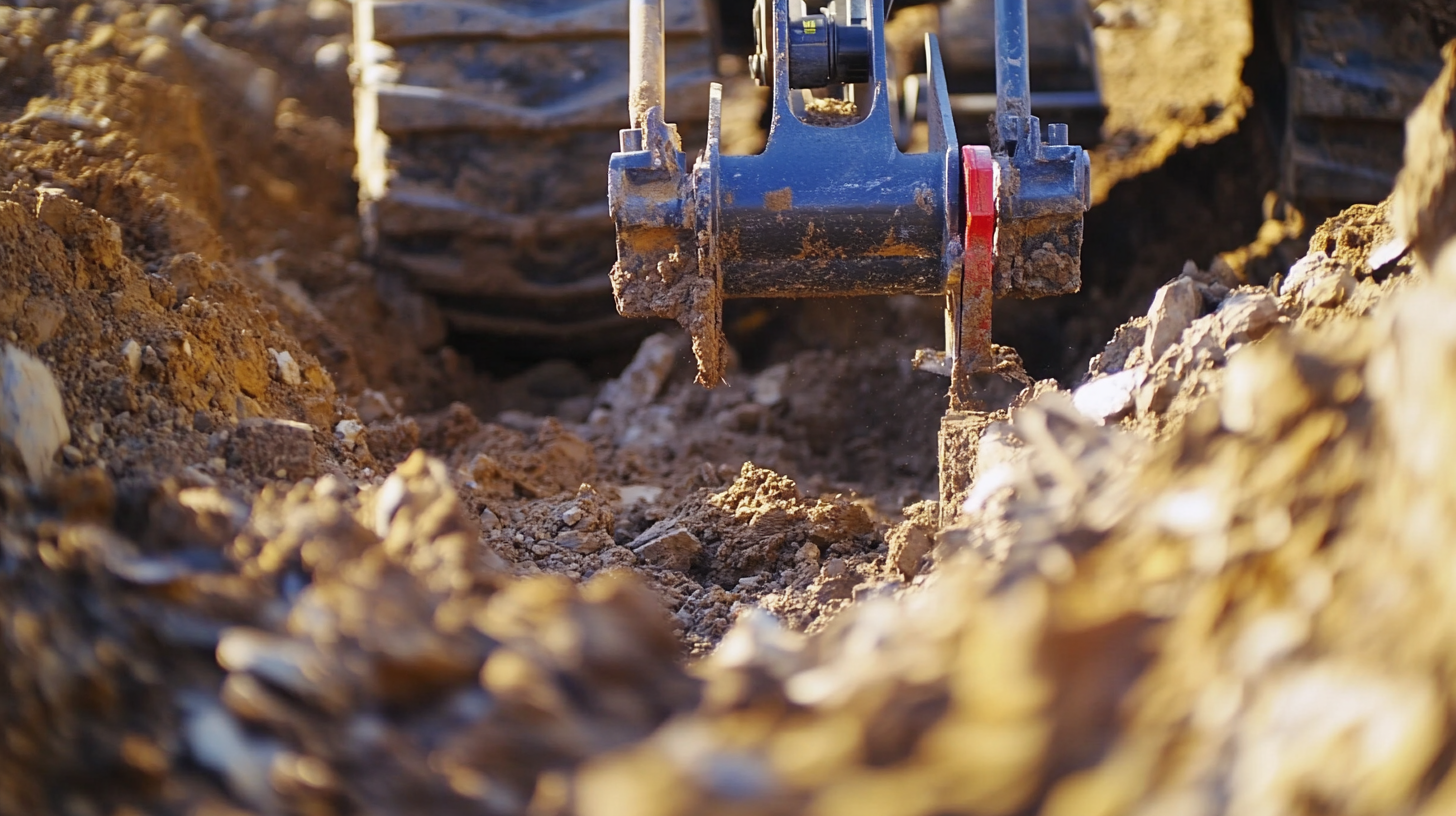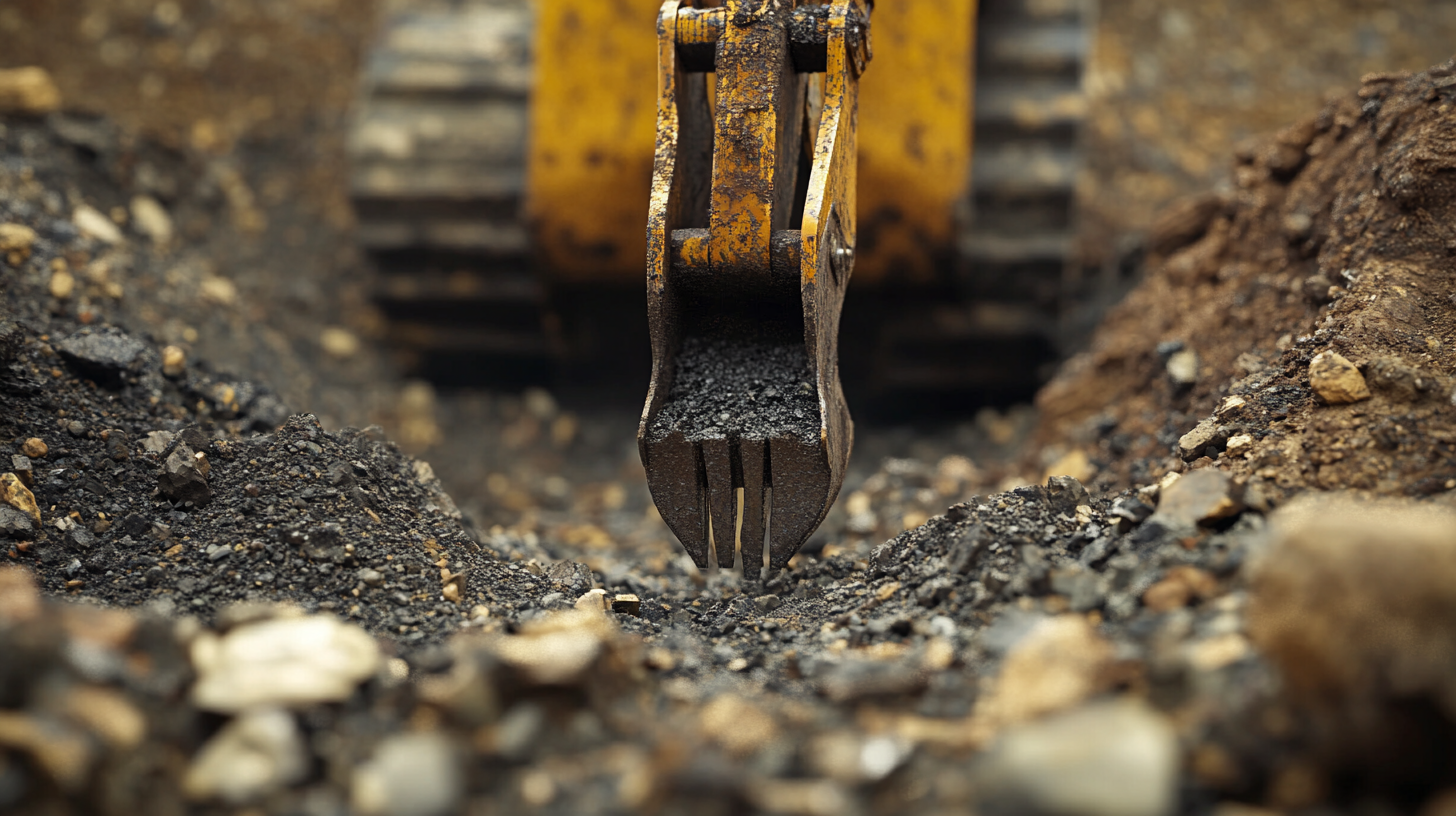Blog
Unlocking Efficiency: The Advantages of Using the Best Trenching Tools in Your Projects
In today’s fast-paced construction and excavation industries, the efficiency of project execution is paramount. Utilizing the best trenching tools not only enhances operational productivity but also significantly reduces labor costs and project timelines. According to a report by the Construction Industry Institute, effective use of specialized equipment can improve project efficiency by up to 30%, demonstrating the critical role trenching tools play in modern engineering and construction practices. With the increasing demand for underground infrastructure development, the proper selection and utilization of these tools is essential. By unlocking the full potential of advanced trenching tools, project managers can ensure that their teams work safer, smarter, and more efficiently, ultimately driving faster delivery and better results for their projects.

The Importance of Choosing the Right Trenching Tools for Project Efficiency
Choosing the right trenching tools for your projects is essential for maximizing efficiency and ensuring quality results. When you invest in high-quality tools, you're not just buying equipment—you’re enhancing your workflow and minimizing disruptions. The right tools can help you achieve precise trench depths and widths, allowing for better utility installation and reducing the need for rework.
When selecting trenching tools, consider the scale of your project and the type of soil you’ll be working with. For instance, tougher materials may require more robust tools, like hydraulic trenchers, which can handle compacted earth with ease. Conversely, smaller jobs might benefit from manual trenching tools that offer portability and low cost.

Key Features to Look for in High-Quality Trenching Equipment
When it comes to selecting high-quality trenching tools for your projects, certain key features can significantly enhance efficiency and productivity. According to a recent report by the Construction Industry Institute, projects that utilize advanced trenching equipment can complete tasks 20% faster than those that rely on outdated tools. High-quality trenching tools should include durable materials, ergonomic designs, and powerful motors, enabling workers to dig through various soil types with ease.
Tip: Always choose trenching equipment with adjustable cutting depths and widths to accommodate different project requirements. This flexibility not only saves time but also reduces the need for multiple tools, streamlining your operations.
Another critical feature to look for is the ease of maintenance. A survey conducted by Equipment World revealed that tools with simple maintenance routines experience 30% less downtime, leading to significant labor cost savings. Additionally, consider the weight and portability of the equipment; lightweight models can be transported effortlessly to various job sites without unnecessary delays.
Tip: Invest in trenching tools that come with manufacturer warranties and reliable customer support. This practice ensures that you have access to necessary repairs and maintenance, further prolonging the lifespan of your equipment.
Unlocking Efficiency: The Advantages of Using the Best Trenching Tools in Your Projects
| Feature | Description | Benefits |
|---|---|---|
| Durability | Constructed from high-quality materials that resist wear and tear. | Reduces the need for frequent replacements, thus saving costs. |
| Ergonomic Design | Designed to reduce strain and enhance comfort during use. | Improves productivity and reduces worker fatigue. |
| Versatility | Able to handle various types of soil and trenching tasks. | Ideal for different projects, saving time and money on equipment. |
| Ease of Maintenance | Simple and quick maintenance processes. | Minimizes downtime and extends the life of the equipment. |
| Safety Features | Includes safety guards and ergonomic handles to enhance user protection. | Reduces the risk of accidents and improves overall job site safety. |
Industry Insights: How Advanced Trenching Tools Reduce Labor Costs
The use of advanced trenching tools in construction projects significantly reduces labor costs, streamlining both the digging process and the overall project timeline. These modern tools, equipped with enhanced technologies, enable workers to complete tasks with precision and speed, minimizing the need for manual labor. As a result, projects can move forward more efficiently without compromising on quality.
Tip: When selecting trenching tools for your project, consider investing in equipment that offers adjustable settings. This flexibility allows operators to adapt to different soil conditions and trench depths, optimizing efficiency and reducing wear and tear on the tools.
Moreover, using specialized trenching equipment reduces safety risks associated with manual digging. Workers can operate tools from a safe distance, decreasing the likelihood of accidents and injuries. This not only protects your crew but also reduces potential costs related to medical expenses and downtime.
Tip: Incorporating regular maintenance checks for your trenching equipment can enhance performance and prolong its lifespan. Establishing a routine to inspect and clean tools can help identify wear and tear before they become larger issues, ensuring the efficiency of your projects continues unobstructed.
Safety Standards in Trenching: Protecting Workers on the Job Site
When it comes to trenching, prioritizing safety standards on job sites is crucial to protect workers from potential hazards. Trenching operations can involve significant risks, including cave-ins, falling objects, and hazardous atmospheres. By adhering to strict safety protocols, project managers can create an environment where workers feel secure and confident in performing their tasks. One of the essential steps is to implement protective systems such as trench boxes or shoring that can prevent collapses and ensure worker safety.
Additionally, workers should be provided with comprehensive training on best practices and safety equipment usage. This training often includes recognizing potential hazards, understanding emergency procedures, and the proper way to utilize trenching tools. When crews are well-informed, they are less likely to experience accidents, leading to enhanced productivity. Incorporating regular safety audits and drills can further enforce these practices, ensuring that safety remains a top priority throughout the project's duration. By fostering a culture of safety, construction teams not only comply with regulations but also optimize their projects' overall efficiency.

Comparative Analysis: Traditional vs. Modern Trenching Solutions and Their Impact on Productivity
In recent years, the debate between traditional trenching methods and modern solutions has intensified, particularly regarding their impact on productivity and sustainability. Traditional methods often involve significant labor and time expenditures, typically leading to increased project costs and delays. In contrast, modern trenching tools, such as advanced excavation machines and eco-trenching techniques, provide enhanced efficiency. According to industry reports, utilizing modern tools can improve productivity by up to 30%, significantly reducing project timelines.
The latest development, the eco-trench, represents a substantial innovation in trenching technology. This technique not only allows for the reuse of excavated soil but also transforms it into controlled low-strength material. This method conforms with sustainability goals, effectively minimizing waste while maintaining structural integrity. By integrating eco-friendly practices with modern trenching solutions, project managers can achieve both economic and environmental benefits.
Tips for maximizing efficiency:
1. Invest in modern trenching equipment that matches the specific demands of your project to enhance productivity.
2. Incorporate sustainable practices, like the eco-trench, to optimize resource usage and adhere to environmental regulations.
3. Train your team on the latest technologies and methods to ensure a smooth transition from traditional to modern systems, fostering a culture of continuous improvement in your projects.
